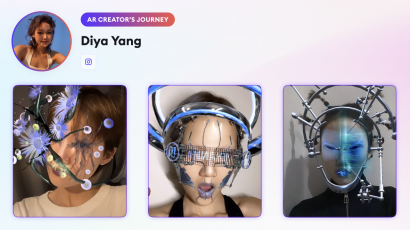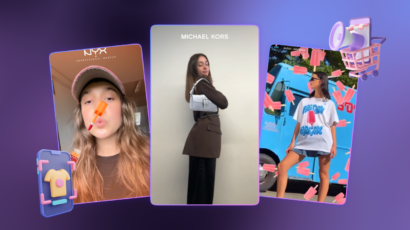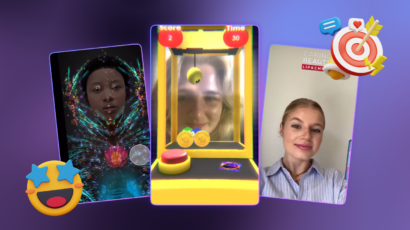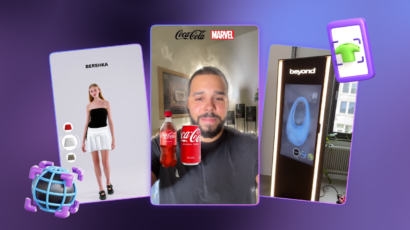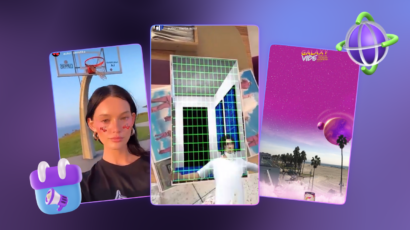Meet Diya Yang, an AR creator inspired by science, mechanics, and bio-art. She creates interactive, futuristic virtual installations, and her work has been shown in marketplaces and art festivals. One of her most significant works is the Anti-future project. She assembled a platform for the intersection of the real and the unreal, tracing out future possibilities relying on the moment. Diya wants to use her art to express her creativity fully, give it a three-dimensional form, and make it lively and engaging.
How did you start your AR journey? How did you discover Augmented Reality? What motivated you to start creation of AR?
My earliest exposure to AR was from my friend Macey when she was keen to design some makeup IG Filters as entertainment through Spark AR Studio. At the time I was working on a long term experimental project and IG Filters became the best artistic medium for me.
What Is AR for you?
For me, AR is more like a mirror with graffiti painted on it. It reflects the ‘real’ world, while maximising the creator’s imagination, materialising it in three dimensions and finally presenting it vividly (and interactively).
What or who is your inspiration?
I tend to be inspired by different fields such as science, mechanics, bio-art, etc.
Come up with something about yourself that sets you apart from other creators. (AR direction that you like most, Passions… Anything you like and can be used to showcase your individualism)
I like to create futuristic interactive virtual installations, with mechanical devices, biological tentacles and plants being the most common types of elements I design.
How would you describe your work, do you have a specific style? direction? Does it change over time?
Futuristic, technological, parametric and post-plant design elements in 3d interactive installations or scenes are the type and style of work I am currently pursuing.
When did you realize that you had reached a turning point in successfully creating augmented reality? What helped you with this?
After I completed several IG Filter productions and related graphic designs and posted them on social media, I participated in some art festivals and art markets. I got a few invitations from curators to exhibit and started to be approached by brands and individuals to collaborate. That time was probably the turning point. For the creator, a relatively serial project, interactivity as well as creativity I think are the most important parts.
Brands you have worked with:
Mini BAZAAR, ANNAKIKI, SOUNDER WANG, uth, iidrr.
Tell me about the projects you’re most proud of? What makes them special? What assets were used to build that project?
Anti-future (consisting of 7 filters) is the project I am most proud of and personally meaningful to me – it is the first AR (IG Filter) work I have completed. I would describe this work as a group creation and performance art, building a platform for the intersection of the real and the unreal, recording the participants’ real emotions, actions and virtual future symbols in a ‘dialogue’. The work is full of randomness, it is like a mirror that changes with the ‘environment’, mapping out future possibilities based on the present.
Describe your working process. Do you follow the work spontaneously or do you have a plan that you follow?
Most of the time, I follow the plan (workflow and timeline) both individual and collaborative projects.
How do you deal with clients’ feedback?
Feedbacks from clients are very important to me and keep pushing me forward. For collaborative projects, I reflect and improve based on the feedback. But for personal work, I tend to follow my own feelings.
What is your dream in terms of AR creation?
I don’t have a specific dream in terms of AR creation, my creative focus is more on the project itself (meaning, value, etc.), and AR is only used as an artistic medium. But as far as AR technology is concerned, I hope to make more detailed and interactive virtual installations and spatial designs in the future.
How immense is the future of AR in your opinion?
AR – the new medium for creating, displaying and selling products is a big shock and change to traditional methods. For the consumer, it removes physical interventions such as space and distance; for the creator, it strips away the constraints of reality and production conditions to the greatest extent possible. AR technology will therefore be a big trend in the future.
We wish Diya the best of luck. 💜 Don’t miss the previous AR journey blog. Get inspired by our creators!
